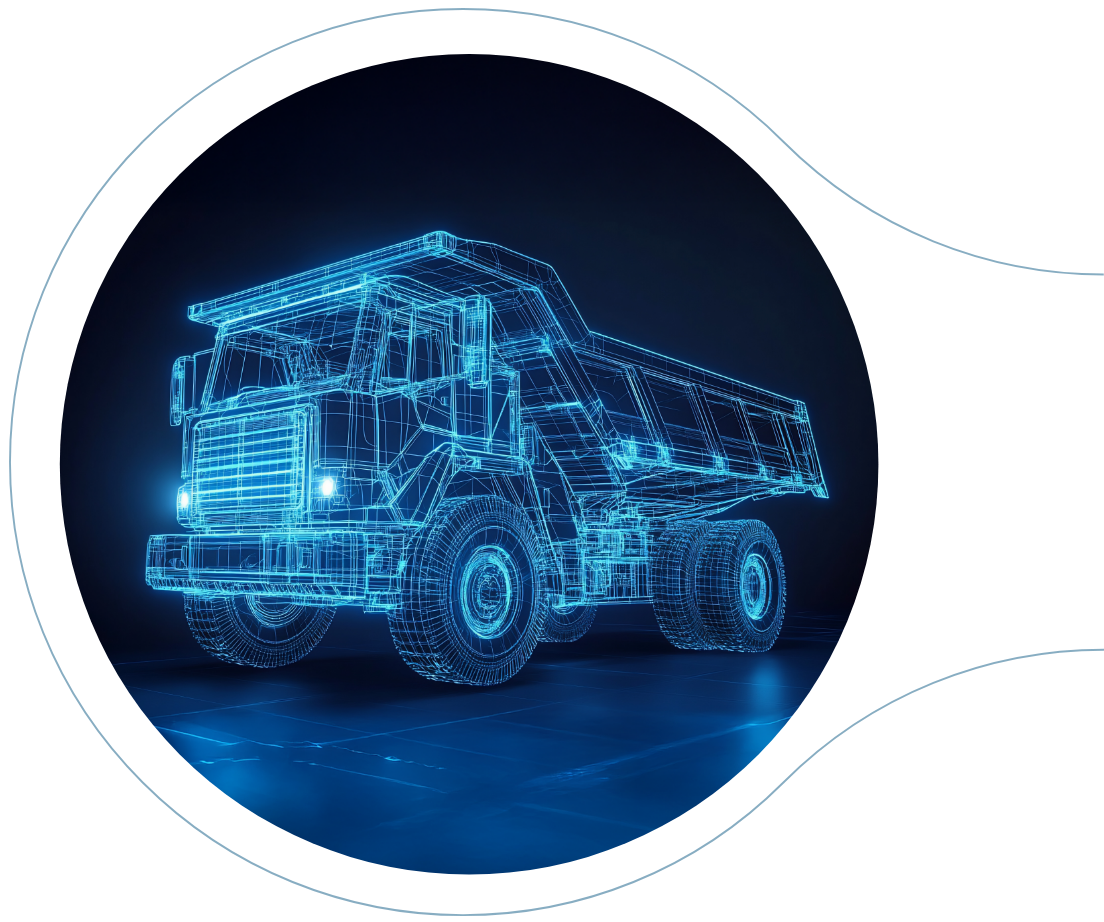
Our client faced delays in training their AI models for autonomous off-highway vehicles due to manual image labeling. This slowed development and limited their ability to quickly iterate and improve performance, hindering overall progress.
Microsoft Azure
Azure Data Lake
Azure Machine Learning
databricks
Cosmos DB
Custom Vision
GPT-4o

As vehicle manufacturers digitally transform, they are increasingly leveraging machine learning to enhance efficiency and productivity in their product development processes. A critical component of this transformation is the training of AI perception models, which rely on extensive datasets of accurately labeled images. Traditionally, this labeling has been a manual, labor-intensive task, leading to significant delays and potential inconsistencies in the data. These challenges hinder the iterative development process, slowing the refinement of AI models and delaying the timely introduction of autonomous vehicles to the market. To maintain a competitive edge and meet market demands, manufacturers must adopt advanced, AI-driven solutions to automate image labeling, ensuring high-quality data and expediting the development cycle.
Our client, a developer of self-driving off-highway automobiles, faced significant challenges in accelerating their development cycle. A major bottleneck was the time-consuming manual annotation of images required to train their AI perception models. This not only delayed their ability to quickly refine and improve models but also impeded the overall performance enhancement of their autonomous vehicles. To address these challenges, they needed an AI-driven solution to scale the image labeling process, enabling the rapid generation of large, high-quality datasets. This would facilitate faster model training and ultimately accelerate the advancement and deployment of their self-operating systems.

Bosch SDS conducted a comprehensive evaluation of the client’s image labeling process, identifying inefficiencies that slowed dataset creation and impacted AI performance. With our expertise in AI automation and automotive innovation, we identified the need for high-quality, accurately labeled datasets to enhance the client’s ML models for autonomous off-highway vehicles. Drawing on our deep understanding of the right tools and tech stack, we were able to address the process challenges effectively. The goal was to eliminate the delays caused by manual image annotation, enabling faster, more efficient model training without relying heavily on human intervention.
To achieve this, we implemented a GenAI-powered solution that intelligently annotated images using Azure AI Vision Service and GPT-4 for attribute extraction. This solution enhanced the speed and accuracy of image labeling and empowered the client to quickly generate large datasets for training AI perception models. As a result, the client was able to significantly improve their development cycle, make quicker, data-driven decisions, and ultimately accelerate the deployment of their independent vehicles.
Bosch SDS’s AI-driven image recognition solution ensured precise, high-quality labeling, reducing inconsistencies and improving dataset accuracy. This enhanced data integrity allowed the client’s ML models to extract deeper insights, refining AI perception and decision-making. As a result, the client could develop more efficient, reliable self-operating vehicles at a faster pace.
Labeled 10,000+ images in 2 months, accelerating AI training
Automated annotation with 20+ properties, boosting dataset accuracy
Streamlined development cycle, enabling quicker iterations and better performance.
Enhanced contextual understanding with 30+ tags and 6+ custom prompts for improved real-world adaptability

Leveraging our expertise in AI and machine learning technologies, we developed an automated image annotation solution that accelerated the client’s development cycle for self-operating off-highway vehicles. The team streamlined the image labeling process, empowering the client to generate high-quality datasets at scale. By integrating AI into their workflow, we shifted their approach from reactive to proactive, enabling faster iterations, boosting model performance, and laying the groundwork for future advancements in autonomous technology.
